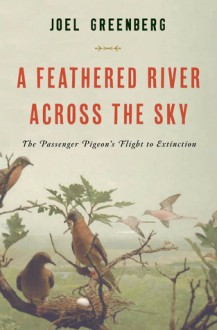A Feathered River Across the Sky: The Passenger Pigeon's Flight to Extinction
In the early nineteenth century 25 to 40 percent of North America’s birds were passenger pigeons, traveling in flocks so massive as to block out the sun for hours or even days. The down beats of their wings would chill the air beneath and create a thundering roar that would drown out all other...
show more
In the early nineteenth century 25 to 40 percent of North America’s birds were passenger pigeons, traveling in flocks so massive as to block out the sun for hours or even days. The down beats of their wings would chill the air beneath and create a thundering roar that would drown out all other sound. Feeding flocks would appear as “a blue wave four or five feet high rolling toward you.”John James Audubon, impressed by their speed and agility, said a lone passenger pigeon streaking through the forest “passes like a thought.” How prophetic—for although a billion pigeons streamed over Toronto in May of 1860, little more than fifty years later passenger pigeons were extinct. The last of the species, Martha, died in captivity at the Cincinnati Zoo on September 1, 1914.As naturalist Joel Greenberg relates in gripping detail, the pigeons’ propensity to nest, roost, and fly together in vast numbers made them vulnerable to unremitting market and recreational hunting. The spread of railroads and telegraph lines created national markets that allowed the birds to be pursued relentlessly. Passenger pigeons inspired awe in the likes of Audubon, Henry David Thoreau, James Fenimore Cooper, and others, but no serious effort was made to protect the species until it was way too late. Greenberg’s beautifully written story of the passenger pigeon provides a cautionary tale of what happens when species and natural resources are not harvested sustainably.
show less
Format: hardcover
ISBN:
9781620405345 (1620405342)
Publish date: January 7th 2014
Publisher: Bloomsbury
Pages no: 304
Edition language: English

